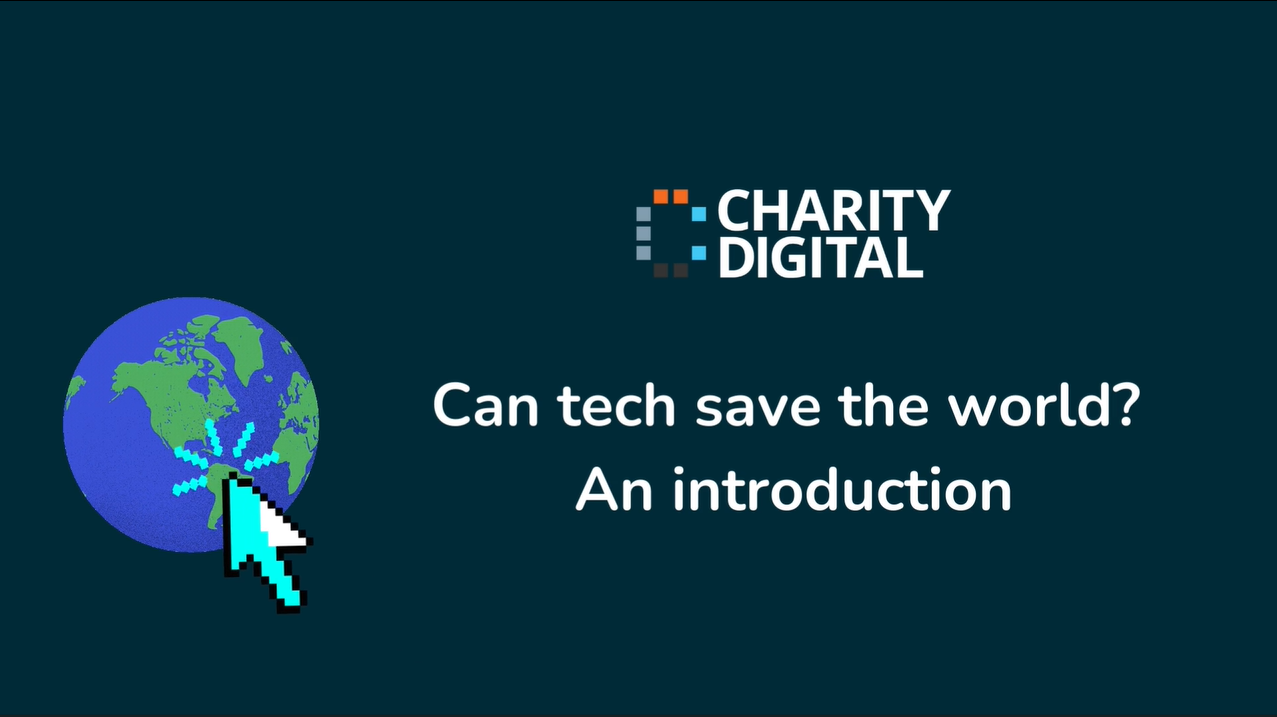Insights
INSIGHTS
All Topics
How digital improves financial sustainability
02 Sep 2021by Aidan Paterson
We look at how charities can utilise the power of modern cloud-based tech to improve their financial sustainability
Charities have always faced considerable challenges when it comes to securing the funding required to fulfil their mission. COVID-19 has brought this into sharper focus. Even before the longer-term effects on statutory sources of income are fully realised and understood, charities have seen the financial landscape transformed.
This has particularly applied to those reliant on events or other forms of face-to-face fundraising. An uncertain post-pandemic future means that a renewed emphasis on financial sustainability is vital.
Charities have had to take a more agile approach and innovate their fundraising operations. They have also had to look to delivering services in an increasingly remote environment, and technology has come to the fore here. Digital has played a key part in this process.
Most importantly, having the systems and procedures in place to enable robust decision-making is crucial and enables charities to maintain the cash required to support service users.
In order to achieve this, a charity’s financial management procedures must extend beyond churning out figures and providing a historical snapshot of what has been spent. It is also important to use this information to influence, inform, and enable strategy.
This means looking ahead to what your organisation wants to achieve and facilitating the sustainability and feasibility required to fulfil those goals. Having up-to-date and fully utilised finance software can help charities to both manage risks and make the most of opportunities and thereby build a strong, forward-looking, mission-led organisation.
The digitisation of the finance function is an established trend. The benefits of affordable, dedicated, charity-focused finance software are no secret and were already clear before the pandemic. Digital can help overcome capacity issues by automating time-consuming processes, for example.
These automated processes provide a level of detail and data validation that is necessary for an organisation to report accurately and be accountable to stakeholders. Modern cloud-based financial management systems, such as Sage Intacct, allow charities to easily consolidate information across multiple business units and conduct real-time financial analysis.
Because many charities had to digitise at great speed the past year, the use of cloud-based finance software has helped many charities sustain operations even with people working from home.
The benefits of this continuity can be built upon and increased in the post-lockdown world, even if we do return to some form of a traditional office-based model. The pandemic has presented a great chance for charities to re-evaluate their risks, and then make the most of the opportunities that this increased connectivity has brought about.
Managing risk
Risk management is a key part of effective governance for charities of all sizes and all levels of complexity.
This doesn’t mean eliminating all risks – that would be unrealistic. Indeed, one of the often-overlooked risks is not doing anything new for fear of it going wrong. But it does mean identifying and managing the possible and probable risks that a charity may face over its working life. If the significant risks are well-known and monitored, organisations can make informed decisions and take timely action.
As part of this, financial risk management is imperative for any organisation seeking to set strategy, fulfil its aims, and develop the sustainability required to do this. Finance software can help charities manage a huge variety of financial risks on a day-to-day basis. It can also aid improved strategic planning through providing assurance that any risks associated with new undertakings will be managed.
Identifying and understanding where those risks are is the first step. A number of them are procedural and relate to having solid internal financial controls. For example, are you able to readily spot and correct errors? Are there secure processes in place over who has access to money?
But where finance systems can play a wider role is in managing the risks of not having full oversight over finance across the whole organisation. They can help provide accuracy and a real-time view of the financial position.
Are you able to identify cash flow issues and plan accordingly? For example, late payment by commissioners can cause major problems. Having sight of this early can enable you to address it. Can you easily and accurately record and track all creditor and debtor information? Are sufficient controls on spend in place, particularly in key finance areas?
Are you able to analyse and respond to trends? Is income from certain sources declining compared to the same period in previous year? There may be a perfectly logical explanation for this, but spotting it sooner rather than later gives you more chance to deal with it.
Are you facing capacity overload? A limit on the amount of work that can be done has been highlighted as a key obstacle to achieving higher organisational financial literacy in charities. Even if you can get the right finance information, developing the ability to get the best out of it is time-consuming. Easy-to-use finance software can help overcome this.
But arguably the biggest area in which finance software can make a significant strategic and operational difference is in breaking down data silos. Silos are a considerable risk. They can restrict clarity of vision across an organisation, “breeding mini empires where people are less likely to collaborate, share information, and work together as a cohesive team”. Unsurprisingly, that can lead to poor decision-making as well as having an impact on morale, efficiency, and effectiveness.
Data silos make meaningful data analysis more difficult. Work and effort may be duplicated. And with no overarching control over how data is gathered and analysed, there’s a greater risk of data leaks or compromised security from storing data on non-approved applications.
One of the keys to dismantling data silos is improving data integration, particularly through modern finance software. Older systems may not be set up for data sharing and may vary between departments. Unifying data via an easy-access web interface can help facilitate the sharing of information, increase collaboration, and address the problems of a siloed culture.
Making the most of opportunities
Successful management of risk brings both opportunities and obstacles that may impact a charity’s ability to plan effectively. Finance software can help to overcome them through improved communication and flow of data. For example, Sage Intacct has a number of tools to make financial reporting simpler, including a built-in role-based dashboard that instantly captures financial and operational information from all departments. This provides greater visibility of what is happening in a charity for management, trustees, staff, volunteers, and other stakeholders.
Having up-to-date data is a real bonus in terms of seeking funding from grant makers or tendering for significant contracts from commissioners. Accurate financial information is required to properly cost the bid and support both external and internal reporting.
Funders, as well as beneficiaries and donors, are increasingly focusing on impact. Addressing financial risk is only truly useful if a charity can meet its charitable objectives and make a difference. While not all impact can be measured in tangible terms, finance software does offer better opportunities to assess it.
Charities can analyse data on investment in service improvement to show benefits delivered, such as cost savings, improved outcomes, or impact per beneficiary. The analysis can then be used to support the case for investment in new marketing and fundraising by tracking previous results. By being able to answer the question, ‘what impact are we having?’, Charities can promote a culture of financial sustainability.
A further key element of sustainability is reserves. A number of charities have found themselves dipping into them since the onset of the pandemic, finding that now is the ‘rainy day’ they were being held to protect against. While finance software can enable a charity to keep a tight rein on reserve levels, it also means being able to take the opportunity of spending unexpected surpluses within a financial year if it is confident that its reserve levels are sufficient.
Finance software can be used to gain an understanding of what a charity is trying to achieve by ensuring that the risks associated with inaccuracy and validation are managed. Other “naïve” tools like Excel fall short as they have no in-built understanding of accountancy or what you are trying to accomplish.
The early stages of the pandemic, and the initial lockdown, saw many solutions to the immediate obstacles faced by charities. The challenge now is to integrate those learnings and processes into wider strategic planning. Organisations already on the path to digital transformation, and utilising cloud-based finance software, are in a better position to survive and succeed. Recognising this will give all charities a far greater chance of coping with the uncertain future.
By managing financial risks, and most importantly, grasping opportunities, through digital tools and finance systems, charities can transform continuity into sustainability. And from there, continue to make a real difference.
Find more resources
Find more charity finance resources at the NPO Success Hub
Aidan Paterson
More on this topic
Recommended Products
Related Videos
Our Events
Charity Digital Academy
Our courses aim, in just three hours, to enhance soft skills and hard skills, boost your knowledge of finance and artificial intelligence, and supercharge your digital capabilities. Check out some of the incredible options by clicking here.
















